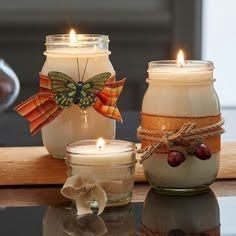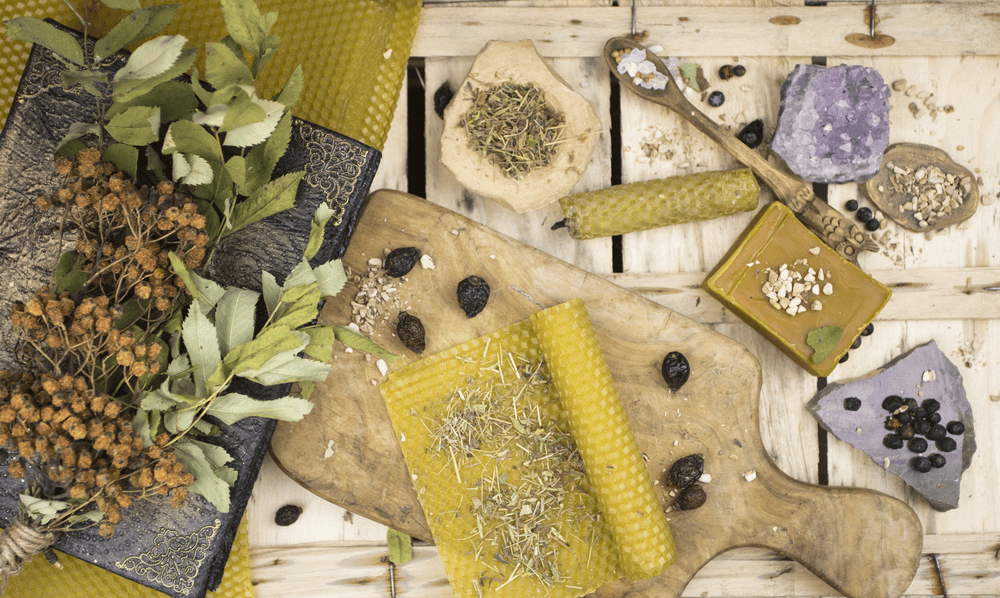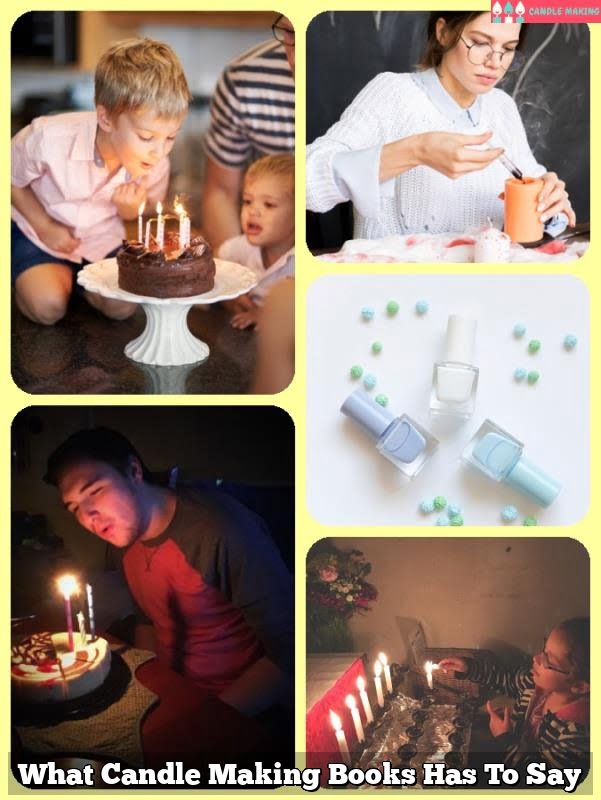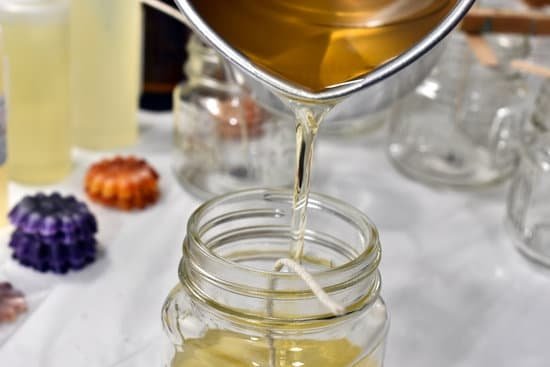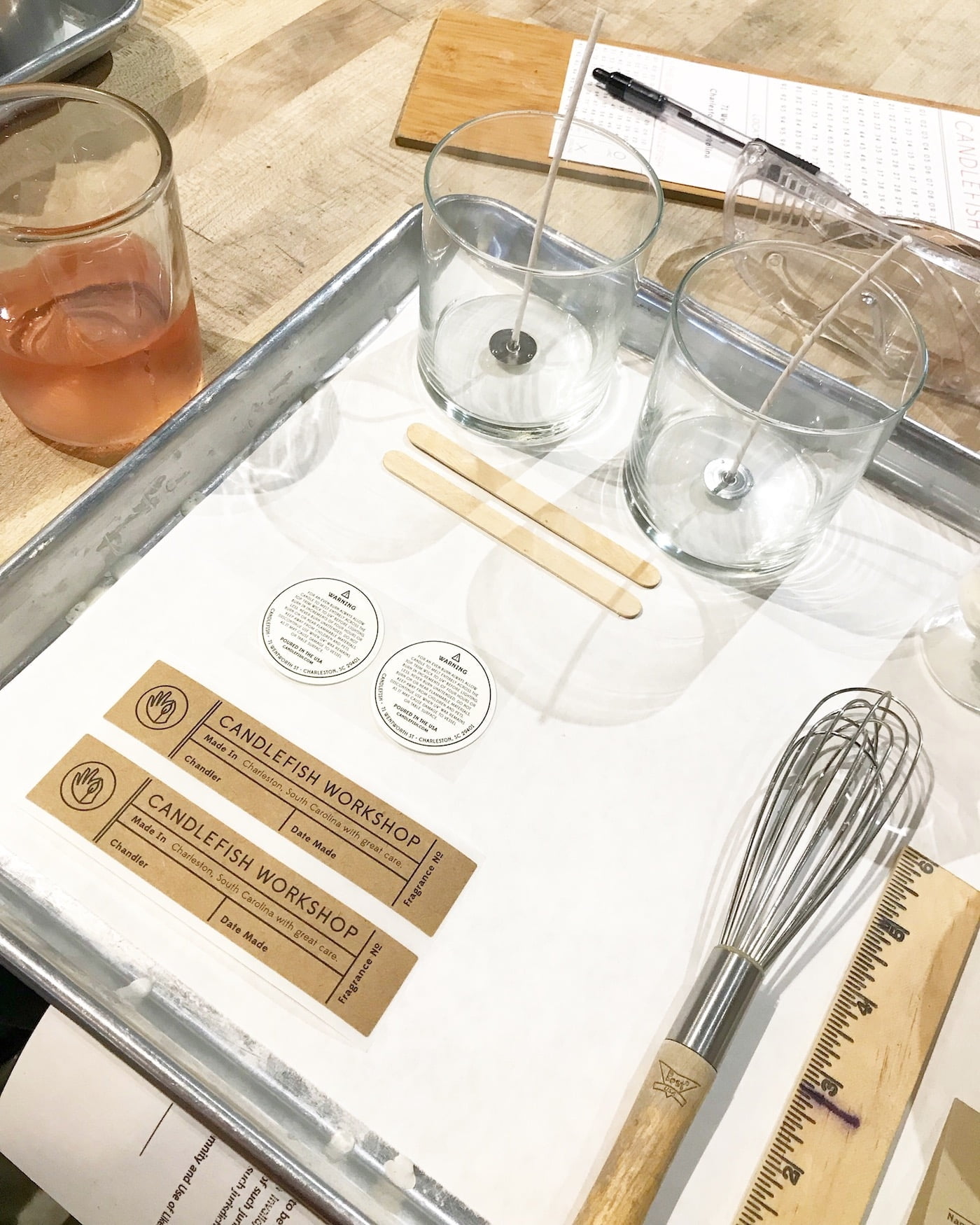Introduction
Books and candle making are two activities that go hand in hand. For many people, the process of reading opens new doors and allows us to explore worlds beyond our own. These worlds range from fantastical fairy tales, dystopian futuristic battles, or gritty detective novels. Likewise, candle making provides an opportunity to create a unique item out of materials that can be found in most households. The process of taking an inert material like wax and transforming it into something with a wonderful scent is fascinating for any do-it-yourself enthusiast.
It is no surprise then that books about candle making have become popular amongst hobbyists and aspiring artisanal makers alike. While this perhaps comes as a surprise for those who are beginners in the practice, it makes perfect sense when you think about how the activities go together: reading provides insight and inspiration while the act of creating offers tangible items and fragrant reminders of our hard work invested in the project. One may use their readings as a jumping off point to explore ancient techniques Grecian beeswax tapers or just find a simple step-by-step guide to make classic soy candles. No matter your mood or preferences, books on candle making provide something for everyone regardless of one’s experience level.
In addition to giving an array of creative ideas and available histories, these works often teach valuable technique tips that can help avoid common pitfalls novice makers may fall into. After reading some helpful advice within the pages one can learn which wicks will result in optimal burning properties, which types of wax best prevent excessive shrinkage when poured, or what kinds of containers give candles sophisticated looking stylish presentation upon completion. Regardless if you’re interested in constructing molded paraffin pillars to achieve intricate designs or want your space enveloped with scents reflecting fruits and spices – books on candle making are here to turn visions into reality!
The History of Candle Making
The history of candle making dates back centuries, with the earliest known candles being constructed by ancient Egyptians in 3000 BCE. Egyptians would make their candles from beeswax and tallow, which provided a bright flame used to light up dark tombs while they buried the dead.
In Ancient Rome, beeswax was often expensive and hard to come by so different types of animal fat were used such as lard or beef suet. In addition to this, both wax and tallow were also made from vegetables such as bayberries or even unsalted butter. Romans dipped multiple wicks into the melted fats in order to create a larger source of light.
The use of candles spread throughout Europe during the Middle Ages. At this point in time, candles had become symbols of prestige and they were often given as gifts that represented wealth and nobility. In parts of Europe, like England, wax production became prosperous as it was thought to afford certain benefits over other sources of lighting at the time like torches or oil-powered lanterns. Eventually, advances in technology led to commercially produced candles becoming widely available for mass consumption by the 18th century. These new factory-made candles helped encourage global trade due to the cost efficient transportation of goods that came about with each new invention.
With the rise of electricity in modern times, most people no longer need handheld light sources like candles but they remain popular for decorative purposes, aromatherapy benefits or even religious ceremonies and festivals held around the world today.
Differentiating Candle Types
Books about candle making can provide an excellent starting point for anyone interested in creating candles of their own. Most books on the subject cover a variety of topics from beginning to advanced techniques and tips, to different types of waxes, wicks, molds, fragrances and dyes. Many books also include a selection of simple projects with detailed step-by-step instructions or offer creative ideas for embellishing your own handcrafted candles.
When it comes to differentiating the various types of candles, there are all kinds of subcategories that can be examined. For instance, there are container candles which are set within holders or containers and free-standing pillar candles often used as decorations in weddings and events. Another type is votive candles which are small and placed in glass containers that trap heat to keep them burning longer while releasing scent; they are often seen during religious services. Additionally, there are tapers which are thin tall candles that fit in slender holders; these popular varieties can be found in dining settings at restaurants. Tealight candles which come housed in metal cups may be used as accents around the home or garden; they offer quick light with no fuss setup. Lastly, floating candles are illuminants that have been unsinkable by design since they contain air trapped inside!
Understanding the Components of a Candle
The basics of candle making involve understanding the components that make up a candle. Candle wax is the base of the candle; it is made up of either soy, coconut oil or paraffin, and can come in many forms ” from pellets to chunks to pre-molded. Once you have chosen your wax, you will also need to consider what type of wick to use for your candles. The thickness of your wick should be used in accordance with the size and type of wax you are using. Additionally, you might want to add color and/or fragrance to your candles for an extra special touch; color is made from liquid dyes which are added into the melted wax during preparation and fragrance oils added after the wax is cooled. It is important to bear in mind that both ingredients may affect the overall performance of your candles so do research before deciding what combinations work best together. Lastly, once you have all these components ready, you can construct your moulds around a central wick and then pour in melted wax when it has reached 185°F (85°C) – any greater temperature can cause discolouration or bubbling on the surface which should be avoided if at all possible. Subsequently leave time for your candles to cool before putting them up on display or giving as gifts!
Finding Inspiration for Candle Making Meets in Books
Searching for creative inspiration to start your own candle making business? Look no further than your local library — specifically the books on offer. Candle making books can provide valuable information on finding supplies and materials, choosing waxes and scents, crafting candles of all shapes and sizes, as well as business tips and ideas. Many experienced candle makers have published interesting titles that bargain hunters can find used or inexpensively online.
There is much more to discover in these books besides just learning the basics of candle making. Topics such as designing your workspace, setting up a website or marketing plan, designing unique packaging for your products, and creating an overall brand for yourself are some of the topics included in many books about candle making. Furthermore, volumes like “Candles All Around Us” discuss advances in technology such as alternative fuels like soy wax and aromatherapy candles. Experienced authors can give expert advice on how you can use seasonal fragrances to create specialized scents, what molds work best (and which ones don’t!), and how to store finished candles until they are sold. Additionally, some master makers even include their secret recipes for creating wonderful things like floating flower petals, wicked tapers, vases with wreaths of glass beads inside them ” there is so much creativity that waiting to be unlocked among these pages! With the right knowledge guide you have a great opportunity to create something special with little cost investment.
Choosing the Right Tools for Candle Making
Candle making requires a few essential tools to get started. This includes a heat source, such as an electric candle making pot or a double boiler; wax or wax chips (such as paraffin, beeswax, and soy) to melt down; wicks that have been pre-tabbed with metal tabs to anchor them in the wax; containers for poured candles (such as jars or molds); thermometers for both checking the temperature of the wax and room temperature; colorants in the form of liquid dye or flakes; fragrances; and safety equipment like safety glasses and oven mitts.
When purchasing supplies, it’s important to make sure that the candle wicks you purchase are specified for the container size they will be used in. The metal tab at the bottom of each wick should be wide enough to prevent drowning as well as short enough so that it doesn’t touch the side of the container. Additionally, thermometers should also be used when melting wax: one to check room temperature and another to check melter temperature. Doing this helps calculate proper pouring temperatures for different types of waxes. Furthermore, safety glasses should always be worn when handling hot melted wax and when pouring into containers in order to protect your eyes from splattering or spilling hot liquid wax on yourself. Lastly, oven mitts should also be used when handling hot objects like pots, measuring cups, and thermal containers. Doing so will help avoid burns from coming into contact with hot materials.
Understanding the Fundamentals of Candle Making
When learning the fundamentals of candle making, it is important to understand the elements that make up a candle. Knowing the wax, wick, fragrance and coloring components can help you create beautiful and unique candles of your own.
The wax is one of the most important aspects of candle making, as it holds all the other components together and determines the texture and shape of your final product. The two most popular kinds of wax used in diy-candle making are paraffin wax and Soy wax. Paraffin wax is petroleum-based; it’s inexpensive but creates more soot than soy wax. Soy wax on the other hand is natural and organic; it burns cleaner with less soot but is more expensive.
The correct type of wick is essential to a successful candle because it carries melted wax from the base to the flame while burning evenly over time. Common materials used for wicks include cotton or paper core thread, prime tubular or flat braided cotton Candle Wick, Ecosoya Renewable Candle Wick, or zinc core-free Candle Wicks.
Fragrance Oil can make your candle pleasing to those who burn them by adding an aroma therapeutic scent upon ignition. It’s mostly composed of synthetic compounds but may also contain natural essences like vegtable oils made with herbs or flowers. Depending on which type you choose you must use a certain amount to get desired results because too much oilcan cause inefficient burning while too little can make your candles unscented despite having spent time finding just the right scent!
Finally there’s color if you want to add some extra flair to your homemade candles there are several options available such as dyes blocks which melt faster than liquid dye additives allowing for a greater surface coverage at once Use sparingly dyes dissolve quickly! Pigment pastes used in cold process soapmaking are also ideal since they impart vivid coloration to candles without affecting their burn times greatly However sometimes powders such as oxide oxides can be used for deeper tones particularly blues purples greens browns & coppers that may not be achievable with liquid based dyes .
Learning the Wax Temperature Range for Candle Making
When it comes to solving many of the problems that can arise when making candles, the key is understanding wax temperature ranges. The temperatures at which wax melts and freezes vary greatly, depending on the type of wax used. Generally speaking, most waxes melt between 120°F and 170°F (48-77°C). Beeswax typically melts around 145°F”150°F (68-66°C), paraffin wax usually melts somewhere in the range of 135°F”165°F (54″74°C), and soy wax has a melting point of just 120-130°F (49-54°C).
Knowing these temperature ranges is essential for candle makers, as they can be used to create properly layered candles with beautiful designs or avoid accidental meltdowns by monitoring temperatures while pouring melted wax or dipping wicks or embeds into melted wax. For this reason, it is important to always follow manufacturers’ safety guidelines and never exceed the recommended temperatures as doing so may result in combustion. When making layered candles, having an accurate thermometer on hand may help you ensure that you pour each layer at appropriate temperatures. To preserve the fragrance and colour pigments, it is also a good idea to never overheat the wax beyond its melting point either.
Creating Designs and Patterns with Wax
Candle making is an age-old craft that has been enjoyed by generations of artisans. With the right supplies and knowledge, a skilled artist can create gorgeous and intricate designs with wax. If you are interested in learning the basics of candle making, there are many books on the subject. These books will guide you through the essential techniques of forming candles, manipulating wax, and creating remarkable designs. You’ll also learn about different types of wax, advanced design techniques like layering multiple colors, adding fragrances, and various decorative methods. If you have knowledge of traditional craftsmanship or are looking to start a new hobby, these books on candle making will be incredibly helpful tools for your endeavors. Pick up a book today to learn more about this classic art form and start crafting unique candles from the comfort of your own home!
DIY Projects for Decorating and Displaying Candles
Books about Candle Making are a great way to learn about and explore the exciting craft of candle making. Whether you are a novice wanting to learn the basics or an experienced crafter looking for new ideas, there is something for everyone in these books. With step-by-step instructions and gorgeous photographs, these books provide affordably priced help, from simple tips on how to make your own candles to detailed, project-based instructions.
In addition to providing instruction on crafting your own candles, many of these titles also offer creative ideas for decorating and displaying them. From stylish designs suitable for wedding receptions and elegant dinner parties to eye-catching displays that instantly transform any room into a unique haven of light and warmth – you’ll find all kinds of ideas here! In addition to creative display suggestions, many of these books also provide helpful advice on scented candles, appropriate usage guidelines and general tips on extending the life of your creations.
Sourcing Other Supplies for Candle Making
In addition to finding books about candle making, other supplies for candle making can come from a variety of sources. For starters, most craft stores carry supplies for candle making such as waxes, wicks, molds and fragrances. Local hardware stores generally have wax as well as wicks and fuel for use in gas or electric burners. They may also carry thermometers specifically designed for use with wax temperatures. For specialty items like dyes, additives and unusual fragrance oils, online suppliers are generally the best option. By doing research online, it is possible to find sources that offer high-quality products at reasonable prices or even wholesale prices.
Troubleshooting Common Candle Making Issues
The art of candle making requires both creativity and precision in order to ensure a successful, beautiful result. Unfortunately, as with any crafting project, sometimes there can be unexpected speed bumps along the way. From having a wick that is too short for your candle mould to having wax that won’t melt properly, here are some of the common candle making issues and how you can troubleshoot them.
One issue that often comes up is discovering that the wick you have chosen is too short or too long for your mould. If the wick is too long, it will prevent wax from being added to the entire length of the mould. To solve this problem, simply trim away part of the wick so it matches up to your preferred length. If the wick is too short and doesn’t reach all parts of the mould, use some twine or another type of material to tie it in place so everything holds together correctly during the pouring phase.
Another common candle making issue is when wax begins to form clumps or beads instead of melting correctly. In most cases this happens because water has gotten into your melted wax which causes it to solidify again as soon as it hits a cooler surface like glass or metal. To avoid this issue entirely, always make sure all materials used are completely dry before heating them up and always handle melted wax with dry utensils such as wooden sticks rather than metal spoons that may include condensation from room temperature air which could water down your molten wax!
Finally, if you find that your candles don’t burn evenly when lit (for instance one edge boils down faster than others) then you may need to change the width of your wick. Too thin and your flame won’t be able get enough oxygen; on the other hand if you go with a thick wick it will burn stronger but at a lower temperature which can result in uneven burning or drips forming down one side. Experiment with different sizes until you find what works best!
Conclusion
Books and candle making have been a part of the human experience since at least the Middle Ages. Understanding how and why light is important is one of the most basic human needs, so it’s no surprise that books and candle making were quickly adopted by all societies around the world, regardless of cultural background. This is because they provide a dependable source of both information and light.
Throughout history, reading books has been an essential form of education and entertainment, while candle making has served as a practical means to provide illumination in dark places or during night-time hours. Books offer knowledge about a range of topics, from spirituality to science, whereas candle making teaches specialized crafts such as dipping candles or working with colored waxes. However, these two arts have always had something else in common”they allow us to bring light into our lives in significantly different ways.
Books enable us to expand our minds by broadening our horizons with new perspectives, information, and understanding. On the other hand, candles provide physical comfort through their warm glow and often have symbolic meaning attached to them depending on the context in which they are used”religious ceremonies or romantic evenings come to mind. In either case, they are an effective way to add ambiance without over-burdening our environment with emissions from electricity or other forms of light production.
In conclusion, books and candle making both contribute their own unique way of illuminating physical space as well as intellectual one: books spark thoughts that can lead us down unexpected paths while candles provide warmth and comfort within both public assemblies and more intimate moments alike. It’s through these two mediums that society benefits from untold amounts of knowledge transfer but also special reminders that bring feelings of calmness even in the darkest hours. For this reason alone we should be thankful for having access to them still today; lighting our path with books and candle making has transcended time itself .

Welcome to my candle making blog! In this blog, I will be sharing my tips and tricks for making candles. I will also be sharing some of my favorite recipes.

